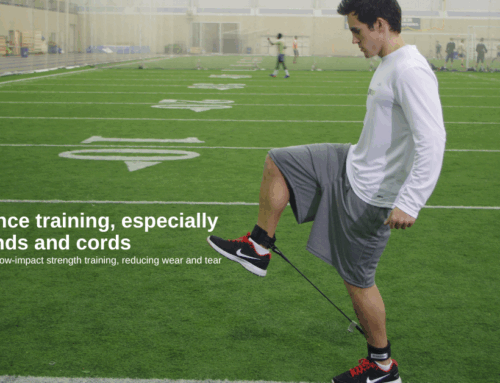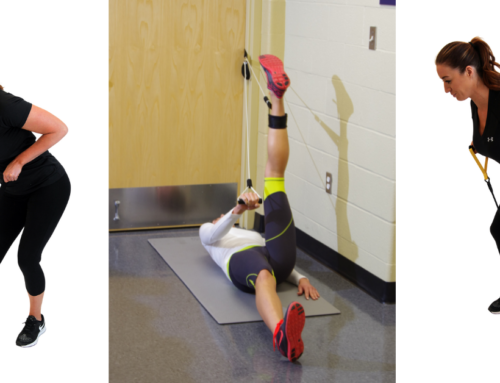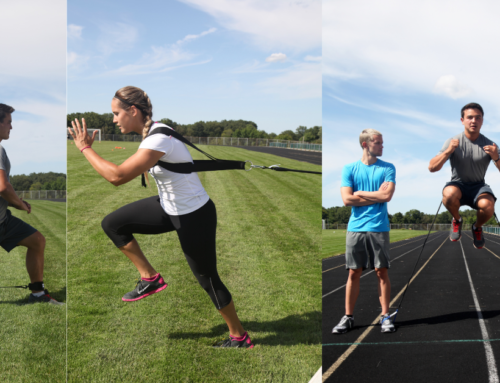In addition to putting in the miles and having some hard workout sessions a few times a week, incorporating a resistance strength training component into your workout regimen is one of the most important things you can do to become faster and gain an edge over the competition.
Whether you are a long-distance runner or a sprinter, resistance strength training plays a critical role in helping you stay injury-free and address inefficiencies in your running form. For sprinters, increasing your power is everything. For distance runners, staying healthy is most often the focal point of your resistance strength training program. If you’re an experienced runner, you’ve probably heard the saying, ‘prehab prevents the need for having to do rehab’.
What You Need to Know When Designing an Effective Resistance Strength Training Program
When designing an effective strength training program, it’s critical that you incorporate exercises that mimic a variety of movement patterns and ranges of motion. Muscular imbalances and a lack of mobility are often the root cause of many over-use injuries that plague runners. An effective resistance strength training program can also both address these imbalances and other musculoskeletal weaknesses by improving the strength and density of your bones, tendons, ligaments, and even joint cartilage.
When it comes to minimizing the likelihood of injuries and increasing your running economy, know that you are only as strong as your weakest link. Most commonly, addressing weak hips, knees, hamstrings, and ankles is critical. Less is more in many cases to fix these issues. Resistance cords, and body-weight exercises are usually the best way to address your body’s weaknesses. If you can’t perform effective body-weight exercises properly, you shouldn’t even think about increasing the load of forces on your body by adding in heavy weights.
5 Top Strength Training Exercises All Runners Should Do Regularly
To get started addressing any current weaknesses in your running, consider incorporating these exercises into your program at least a few times a week. To maximize muscular activation during exercise, researchers recommend you perform these exercises just prior to your run.
- One-Foot Item Pick-Ups
Because we wear padded shoes virtually all the time, our feet and ankle muscles are often relatively weak in comparison to the rest of our bodies. To decrease the chances of rolling your ankle and suffering from foot, ankle, or calf overuse injuries, practice one-foot ball pick-ups. Balance on one foot at a time and bend down slowly picking up a small item such as a plastic cup off the ground with one hand. Try to keep yourself stable on one foot the entire time while bending down and picking up the cup 8 times to start.
- Resistance Cordz Ankle Exercises
One ankle-related exercise is simply not enough for most runners. Another excellent exercise for runners are resisted ankle cord movements. Using the Ankle Cordz S140-TurfCordz® practice taking one step forward with the resistance cord and then slowly bringing your foot back to the starting position. Practice this exercise with diagonal variations and also side-to-side motions moving your ankle through a range of movement patterns.
- Resistance Cord Squats
Work your hamstrings, quads, glutes, and hips all in one great exercise with resistance from the Squat Cordz S99-TurfCordz®. Performing body-weight squats alone won’t address imbalances quite as well as a resisted squat. Work your body through a full range of motion getting your hips to sink below your knees while keeping your feet flat on the ground. The key is to do this exercise slowly and also squeeze your glutes at the top of each squat. Try 3 sets of 12 reps initially.
- Stability Ball Leg Curl
Quad dominance is notorious in many athletes, runners included. Many scientific research studies have shown that improving your muscular imbalance between your quads and hamstrings will significantly decrease your likelihood of running injuries. Doing 3 sets of stability ball leg curls at a number of reps you can comfortably handle will help to address this issue and also strengthen your glutes as well to increase your power when sprinting.
- Single Leg Lunges
Supporting knee health starts with ensuring that the stronger muscles and tendons in our bodies are effectively absorbing the forces of impact during each step that we take. When we run, our bodies experience forces four times the weight of our bodies. Single leg lunges support your body in improving your ability to distribute the impact of these forces proportionately. They also increase the strength of your hamstrings, glutes, quads, hips, and knees in the process. To up the intensity and better target any musculoskeletal weaknesses, practice slow and controlled single leg lunges with our Bungie Rehab Kit M394 & M397-Medicordz®.
Grow Stronger Week after Week with an Effective Resistance Strength Training Program
With a little bit of time and commitment each week, you can improve your overall strength, power, and running economy incorporating these exercises into your regular training regimen. Minimizing the likelihood of injury starts with taking preventative action. At NZ Manufacturing, we carry some of the very best resistance strength training products on the market today. Our resistance cords are used by professional sports teams, Division 1 colleges, and national organizations alike. If you have any questions about our resistance products for runners, reach out to us today by calling 1-800-886-6621 or utilizing our online contact form.





